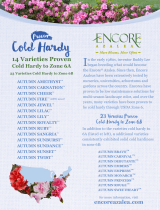VOKERA Linea HE User manual
- Category
- Water heaters & boilers
- Type
- User manual
This manual is also suitable for
VOKERA Linea HE is a high efficiency combi boiler, which supplies heated water to your radiators and hot water to your taps. It is equipped with a built-in frost protection system, enabling the boiler to override the time controls – if switched off – and operate the burner and/or pump, should the temperature drop below 6 °C. The Linea HE boiler lights electronically and does not have a pilot light. In the unlikely event of a fault developing with your boiler, the supply of gas to the burner will be terminated automatically.
VOKERA Linea HE is a high efficiency combi boiler, which supplies heated water to your radiators and hot water to your taps. It is equipped with a built-in frost protection system, enabling the boiler to override the time controls – if switched off – and operate the burner and/or pump, should the temperature drop below 6 °C. The Linea HE boiler lights electronically and does not have a pilot light. In the unlikely event of a fault developing with your boiler, the supply of gas to the burner will be terminated automatically.












-
 1
1
-
 2
2
-
 3
3
-
 4
4
-
 5
5
-
 6
6
-
 7
7
-
 8
8
-
 9
9
-
 10
10
-
 11
11
-
 12
12
VOKERA Linea HE User manual
- Category
- Water heaters & boilers
- Type
- User manual
- This manual is also suitable for
VOKERA Linea HE is a high efficiency combi boiler, which supplies heated water to your radiators and hot water to your taps. It is equipped with a built-in frost protection system, enabling the boiler to override the time controls – if switched off – and operate the burner and/or pump, should the temperature drop below 6 °C. The Linea HE boiler lights electronically and does not have a pilot light. In the unlikely event of a fault developing with your boiler, the supply of gas to the burner will be terminated automatically.
Ask a question and I''ll find the answer in the document
Finding information in a document is now easier with AI
Related papers
-
VOKERA hydra User manual
-
VOKERA AquaNova Water Heater User manual
-
VOKERA Unica HE Combi Boilers User manual
-
VOKERA Pinnacle 16 - 26 User manual
-
VOKERA Eclipse ESC User manual
-
RED COMPACT 35 User manual
-
VOKERA Compact 25A - 29A User manual
-
VOKERA Linea One Operating instructions
-
VOKERA Compact 24SE User manual
-
VOKERA Compact 28SE User manual
Other documents
-
IDEAL INDUSTRIES C24 User manual
-
Ariston 32 MFFI User manual
-
Ariston 24 MFFI User manual
-
Ideal he30 User manual
-
Ideal Boilers he30 User manual
-
Ideal INDEPENDENT+ COM C24 User manual
-
 Encore Azalea 80541 Installation guide
Encore Azalea 80541 Installation guide
-
Royal Linea 8 Owner's manual
-
Ideal he30 User manual
-
Buderus 500-28C User manual












